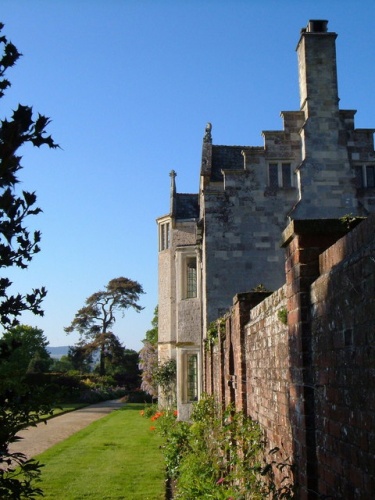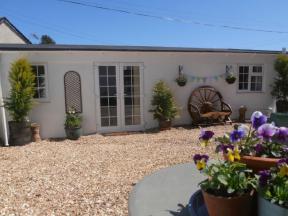
History
John Haydon was a successful lawyer, with practices in Exeter and Lincoln's Inn, London. He made a fortune dispersing former monastic lands in the wake of Henry VIII's Dissolution of the Monasteries.
Haydon acquired Cadhay through marriage and proceeded to build a new manor on the site of an exiting medieval house. He built a hall linked to wings, and his nephew Robert added a long gallery, closing the final side of the house and creating an inner courtyard that is one of the finest features of Cadhay.

This is known as the Court of Sovereigns and is considered one of the finest examples of historic architecture in Devon. The name a reference to statues of four Tudor monarchs, one on each side.
The Haydons were firm Royalists (not surprising when you consider how John Haydon had made his fortune), and Robert Haydon placed figures of Henry VIII, Edward VI, Mary I, and Elizabeth I over doorways leading off the courtyard. Under the figure of Elizabeth is inscribed the date 1617. The stonework around the courtyard is a chequerboard pattern of local flint interspersed with limestone.

Subsequent generations of Haydons spent lavishly, and by 1683 Cadhay was over 17,000 pounds in debt. The family sold off their other estates one at a time, but they could not shed their heavy debts, and in 1736 the house was sold to William Williams, coincidentally a lawyer at Lincoln's Inn.
Williams updated the house to 18th-century ideas of fashion, inserting a new floor inside the great hall to make a dining room, and replacing most of the mullioned windows with Georgian sash windows.
The house was then sold to Admiral Graves, second-in-command to Lord Howe at the 'Glorious First of June' (The Third Battle of Ushant, 1794) naval battle with the French fleet. After Admiral Graves died in 1802 the house was divided and the furniture sold off. The dining room became a farm kitchen.

Cadhay was rescued from an ignominious decline in 1910 when it was purchased by Dunpier Whetham, who restored the house, recovering its Tudor character.
One of the finest rooms in the house is the Roof Chamber, which has amazing curved roof beams. The original roof timbers for the Tudor Great Hall. The long gallery, at the rear of the inner courtyard, is a barrel-vaulted passage filled with a wonderful jumble of bits and bobs collected by the family over time. Rather than a stuffy collection of old portraits, the gallery is lined with displays of objects as diverse as pewter, books, weapons, and fine furniture.
 We've 'tagged' this attraction information to help you find related historic attractions and learn more about major time periods mentioned.
We've 'tagged' this attraction information to help you find related historic attractions and learn more about major time periods mentioned.



